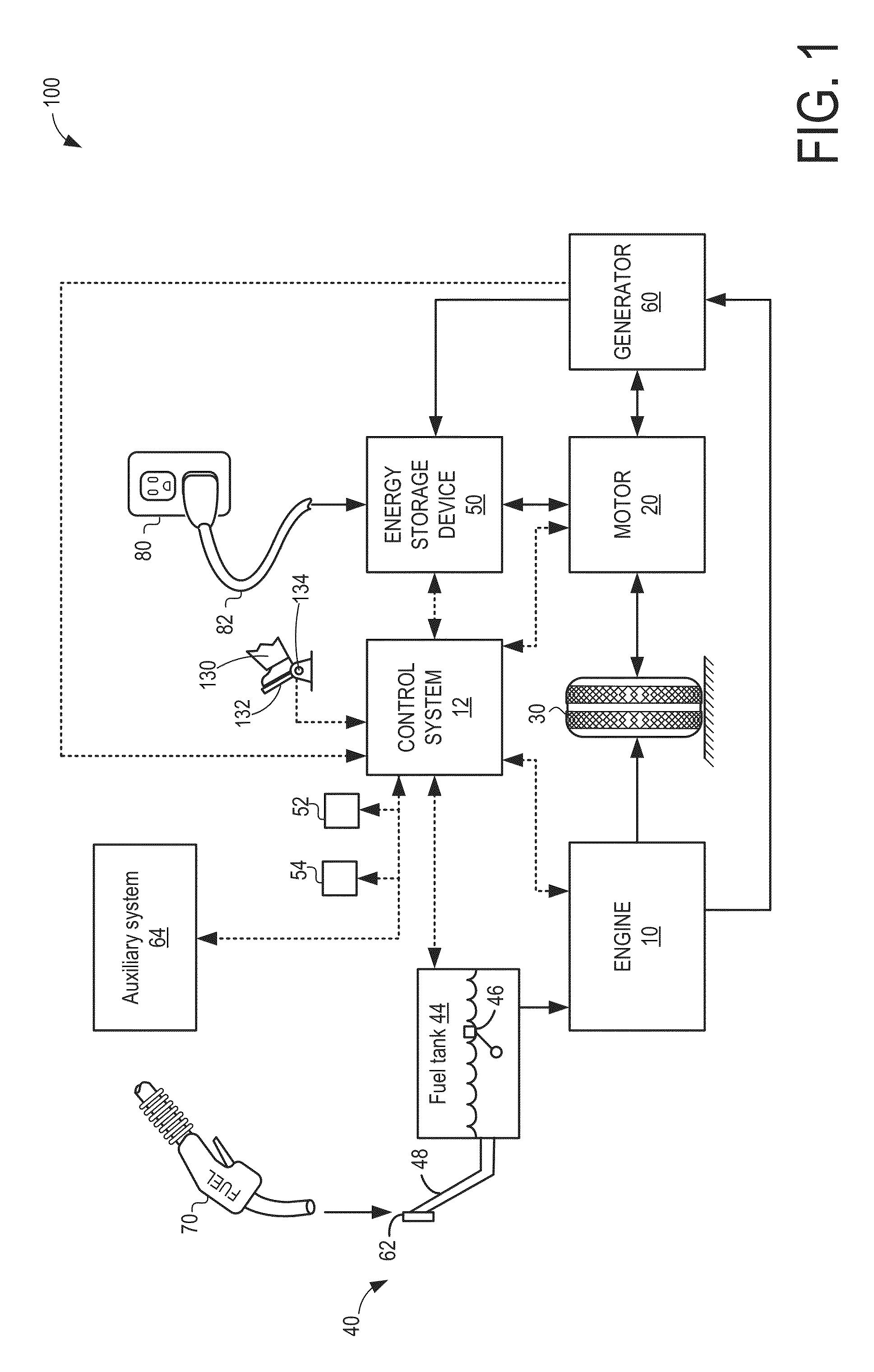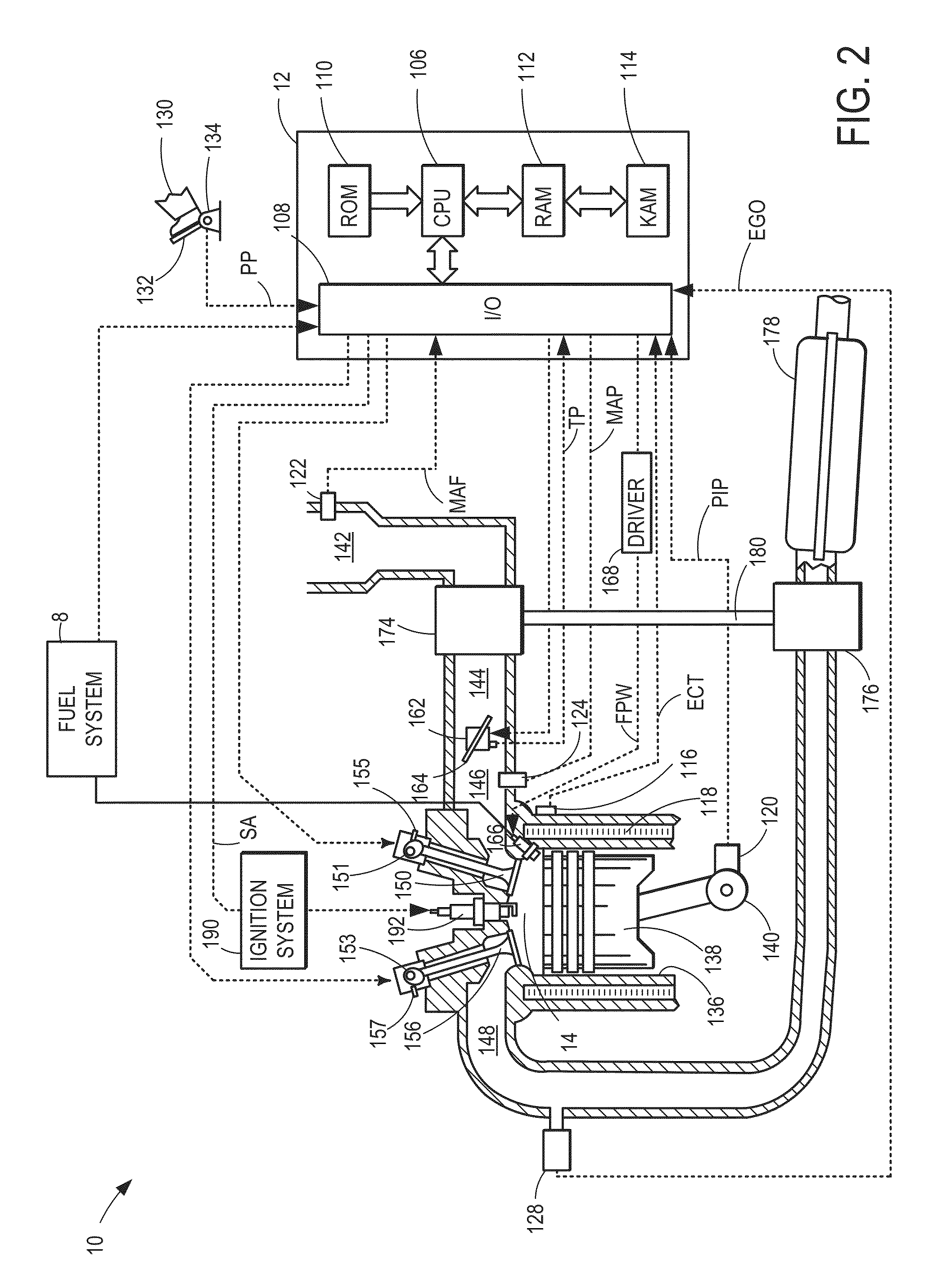Method and system for oil dilution control
a technology of oil dilution control and oil tank, which is applied in the direction of electrical control, hybrid vehicles, machines/engines, etc., can solve the problems of fuel and water contaminating engine lubricating oils, fuel and water may contaminate engine lubricating oils, and engine temperatures may not be high enough to address contaminating water, etc., to reduce or avoid fuel degradation, improve fuel economy, and increase hea
- Summary
- Abstract
- Description
- Claims
- Application Information
AI Technical Summary
Benefits of technology
Problems solved by technology
Method used
Image
Examples
Embodiment Construction
[0018]The following description relates to systems and methods for operating a hybrid electric vehicle, such as the plug-in hybrid electric vehicle of FIG. 1. Based on the age of a fuel available in the fuel tank, as well as a water and / or fuel dilution of an engine lubricating oil, an engine start and operation may be adjusted. Specifically, a controller may be configured to perform a routine, such as shown in FIG. 3, to intentionally operate an engine, even though a system battery has sufficient charge, to deplete stale fuel and / or reduce oil dilution. The routine further adjusts a duration of engine operation, as well as a target temperature of engine operation (e.g., engine hot start or cold start) based on each of an oil dilution clean-out history as well as a stale fuel clean-out history of the vehicle. The controller may estimate and update a fuel age as well as an oil dilution based on various vehicle and engine events, as elaborated at FIGS. 4-6. An example engine operation...
PUM
 Login to View More
Login to View More Abstract
Description
Claims
Application Information
 Login to View More
Login to View More - R&D
- Intellectual Property
- Life Sciences
- Materials
- Tech Scout
- Unparalleled Data Quality
- Higher Quality Content
- 60% Fewer Hallucinations
Browse by: Latest US Patents, China's latest patents, Technical Efficacy Thesaurus, Application Domain, Technology Topic, Popular Technical Reports.
© 2025 PatSnap. All rights reserved.Legal|Privacy policy|Modern Slavery Act Transparency Statement|Sitemap|About US| Contact US: help@patsnap.com



